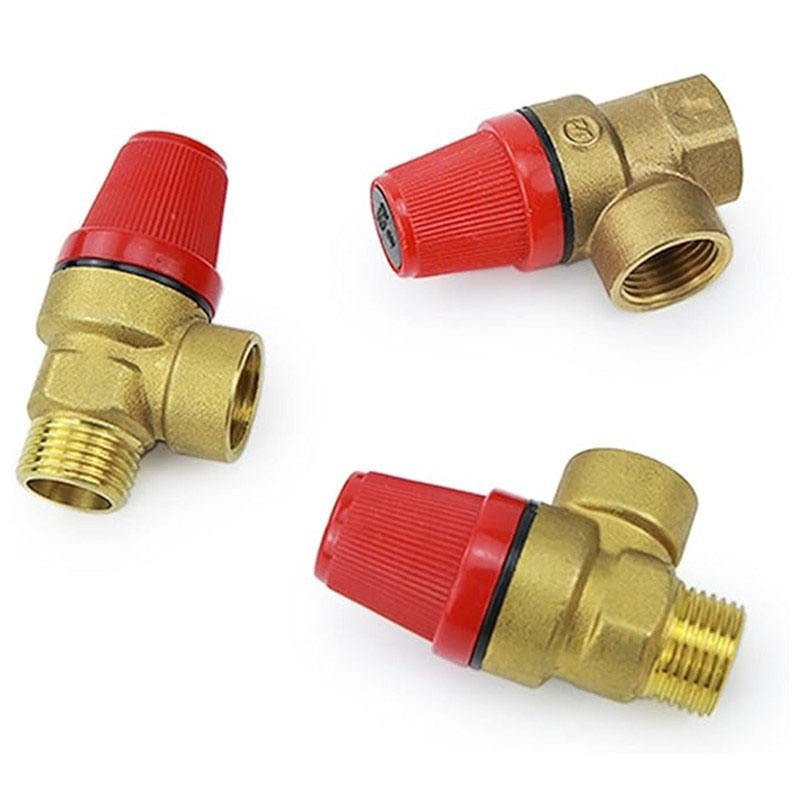Struggling to understand the maximum pressure of a relief valve for your plumbing system? Incorrect pressure settings can lead to equipment failure, costly repairs, or even safety hazards like leaks or bursts. Don’t worry—IVALVECRAFT’s high-quality pressure relief valves offer stable performance and clear specifications to keep your systems safe. Read on to learn everything you need to know about relief valve pressure limits!
The maximum pressure of a relief valve, often called the set pressure, typically ranges from 30 psi to 150 psi for most boiler and plumbing systems, depending on the valve type and application. For example, a standard boiler pressure relief valve is often set at 30 psi to protect against overpressure, ensuring safety and system efficiency.
Curious about how these valves work and which type suits your needs? Let’s dive deeper into the mechanics, types, and key considerations to help you choose the right pressure relief valve for your project.

How Does a 3-Way Pressure Reducing Valve Work?
A 3-way pressure reducing valve is a critical component in many plumbing and heating systems, designed to maintain consistent pressure and prevent damage from excessive force. Unlike standard valves, a 3-way pressure reducing valve has three ports: an inlet for high-pressure fluid, an outlet for regulated flow, and a third port for venting or redirecting excess pressure. This setup makes it ideal for complex systems like boiler pressure valve applications or manifolds in heating centers.
So, how does it function? The valve uses a spring-loaded diaphragm or piston to sense incoming pressure. When the pressure exceeds the set limit, the valve automatically adjusts by opening the third port to release excess fluid or gas, stabilizing the system. For instance, in a boiler pressure relief valve setup, this mechanism ensures the boiler operates within safe limits, preventing issues like furnace pressure relief valve leaking. The valve’s ability to balance pressure dynamically is what makes it so valuable in high-demand environments like construction projects or large-scale plumbing systems.
IVALVECRAFT’s 3-way pressure reducing valves are engineered for durability and precision, offering stable export pressure and sufficient flow rates for industries in Russia, Poland, and the UK. These valves are easy to install and maintain, reducing downtime and costs. Whether you’re a purchasing officer for a construction project or a plumbing wholesaler, understanding the valve’s mechanics can help you avoid problems like boiler pressure relief valve discharge pipe blockages or improper pressure settings. Plus, our valves are designed to meet international standards, ensuring compatibility with various systems, from thermostatic mixing valves to mixing pump heating centers.
Choosing the right valve involves knowing your system’s pressure requirements and flow rates. For example, a valve set at 30 psi for a boiler relief valve might not suit a high-pressure industrial application. Always check the manufacturer’s specifications to match the valve to your needs, avoiding issues like boiler pressure relief valve replacement cost spikes due to mismatched components.
What Are the Three Types of Relief Valves?
Relief valves come in various types, each suited to specific applications in plumbing and heating systems. Understanding the three main types—conventional, balanced bellows, and pilot-operated—can help you select the right one for your project, whether it’s for a boiler pressure valve or a pressure relief valve in a manifold system.
Conventional Relief Valves are the most common type, widely used in boiler pressure relief valve setups. These valves rely on a spring mechanism to open when system pressure exceeds the set point, typically 30 psi for standard boilers. They’re simple, cost-effective, and ideal for systems with stable backpressure, like those in DIY building material chains or plumbing retail. However, they may not perform well in systems with fluctuating backpressure, which could lead to issues like furnace pressure relief valve leaking.
Balanced Bellows Relief Valves are designed for systems with variable backpressure, such as industrial heating systems or mixing pump heating centers. The bellows isolate the valve’s internal components from external pressure changes, ensuring consistent performance. These valves are perfect for high-pressure applications in countries like Germany or the Czech Republic, where precision is critical. They’re also less likely to cause problems with boiler pressure relief valve discharge pipe blockages, as they handle pressure spikes more effectively.
Pilot-Operated Relief Valves are used in complex, high-pressure systems, such as large-scale construction projects or brass safety valve applications. These valves use a smaller pilot valve to control the main valve, allowing precise pressure regulation over a wide range. They’re ideal for scenarios requiring high flow rates and are often found in manifolds or systems with thermostatic radiator valves. Their advanced design minimizes risks like boiler pressure relief valve location issues, ensuring easy access for maintenance.
Each type has its strengths, and choosing the right one depends on your system’s needs. For example, a boiler relief valve 30 psi might use a conventional design for simplicity, while a high-pressure industrial system might require a pilot-operated valve. IVALVECRAFT offers all three types, crafted with high-quality materials to ensure durability and compliance with international standards, making them a top choice for wholesalers in Romania or Poland.
Summary
Understanding the maximum pressure of a relief valve is key to maintaining safe and efficient plumbing and heating systems. From 3-way pressure reducing valves that balance pressure dynamically to the three main types of relief valves—conventional, balanced bellows, and pilot-operated—each plays a vital role in preventing overpressure issues like furnace pressure relief valve leaking or boiler pressure relief valve discharge pipe problems. By choosing the right valve, you can avoid costly repairs and ensure system reliability. IVALVECRAFT’s high-quality valves, designed for B2B clients in Russia, the UK, and beyond, offer stable performance and easy maintenance.
Choose IVALVECRAFT, choose reliable partner, enjoy the high quality and best service.


